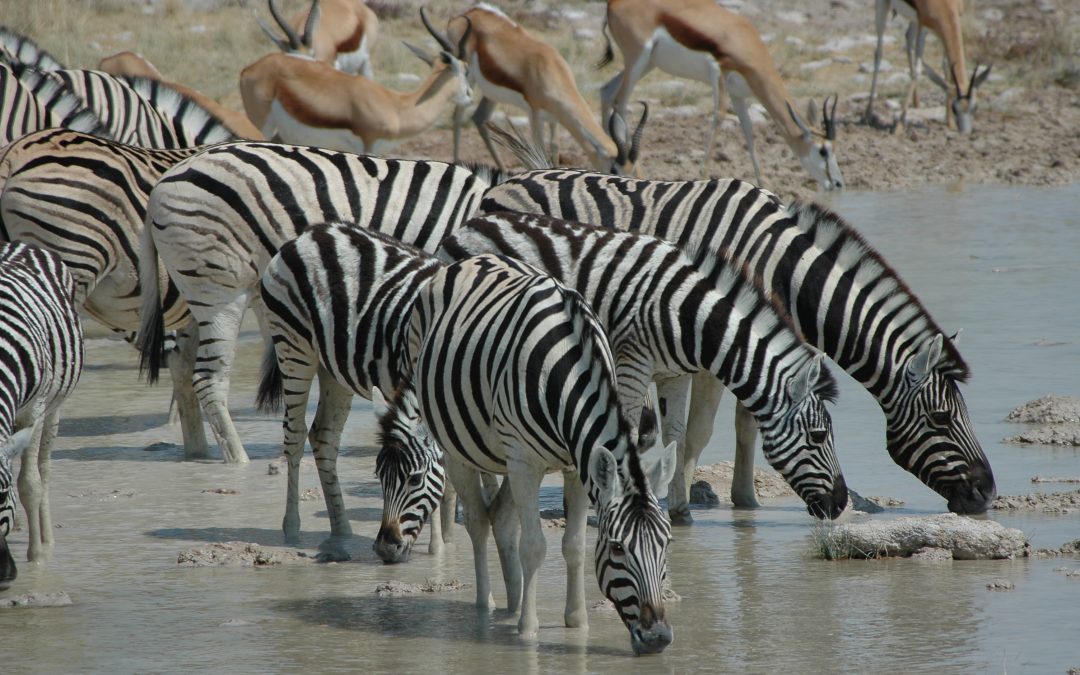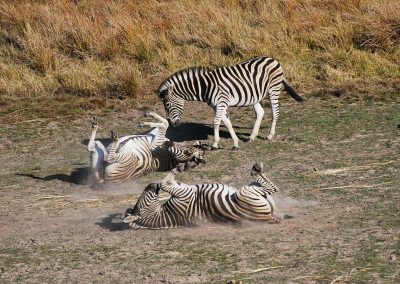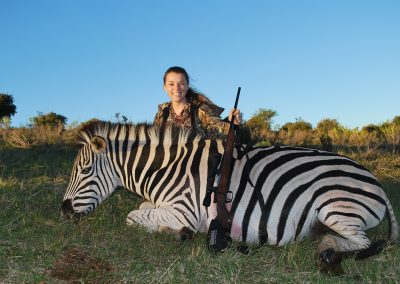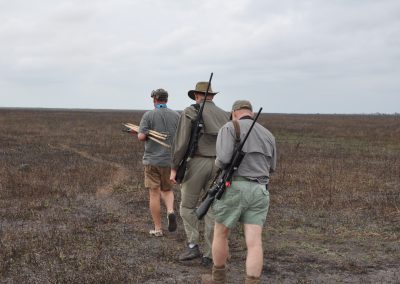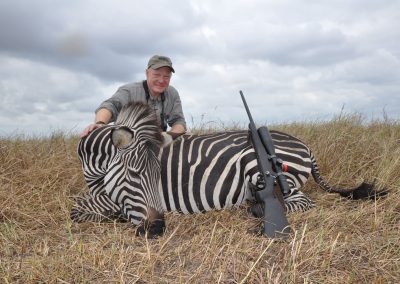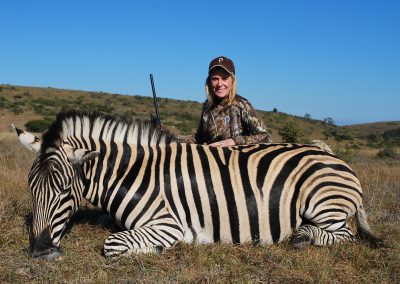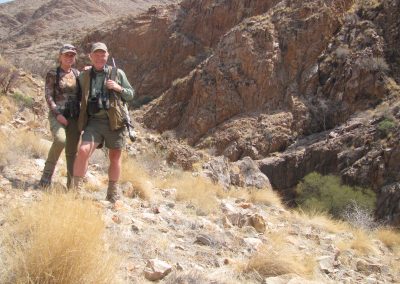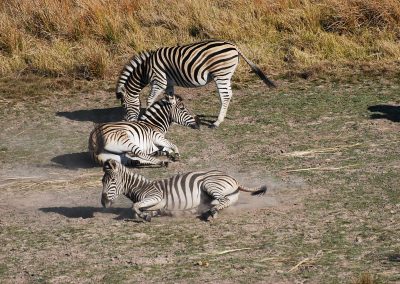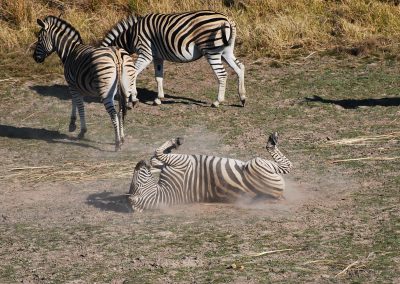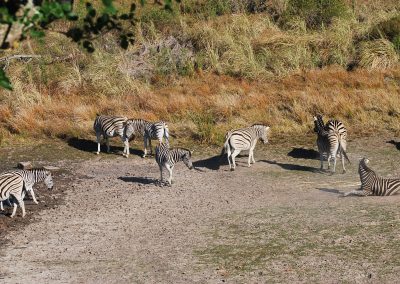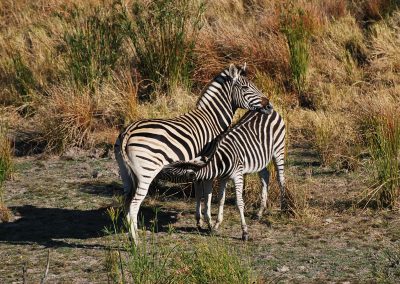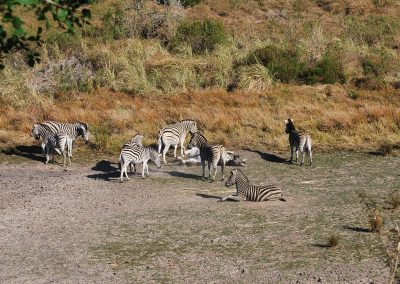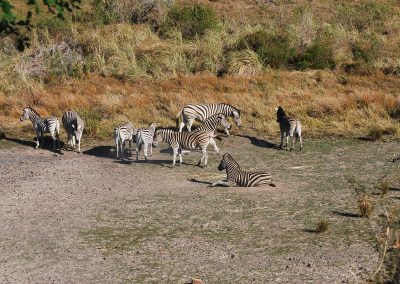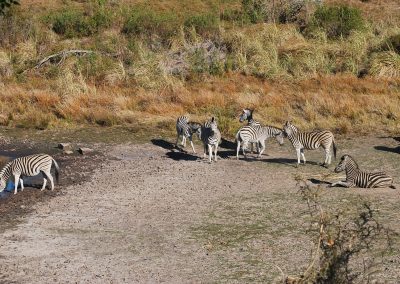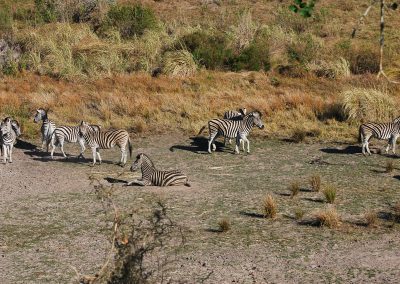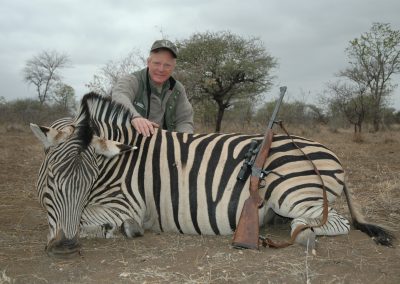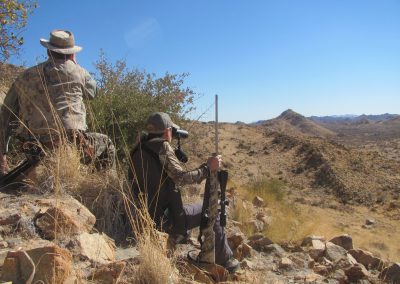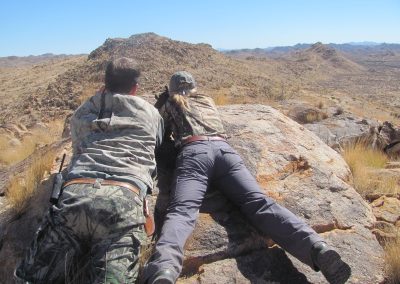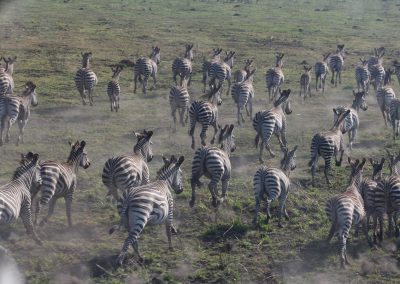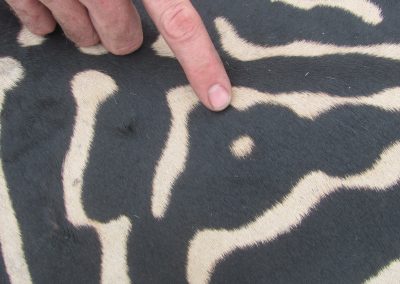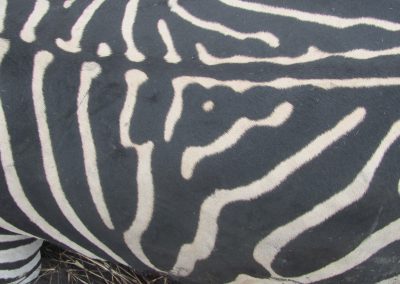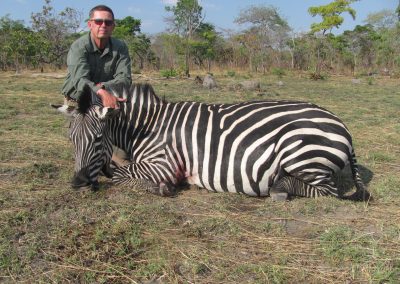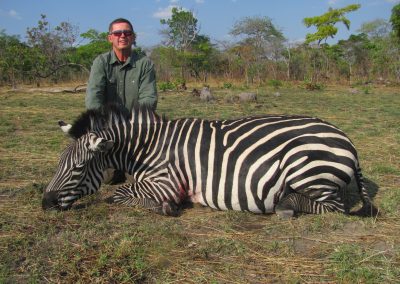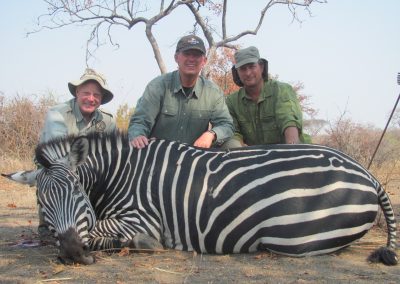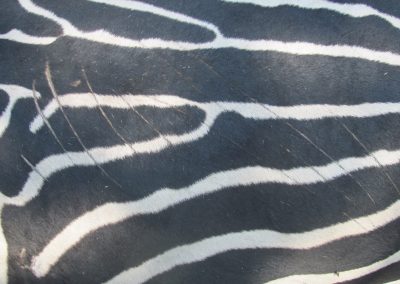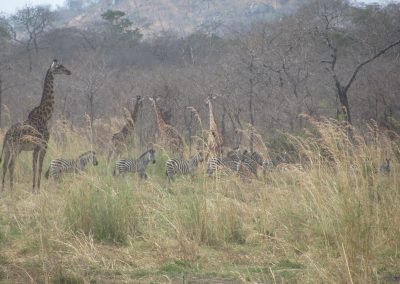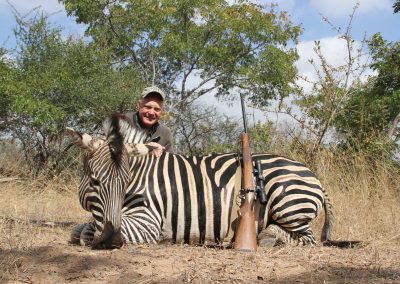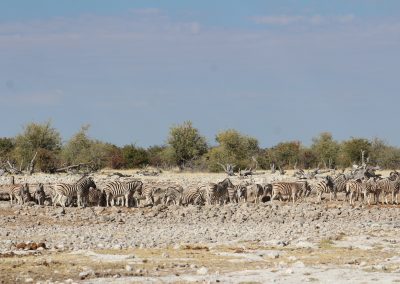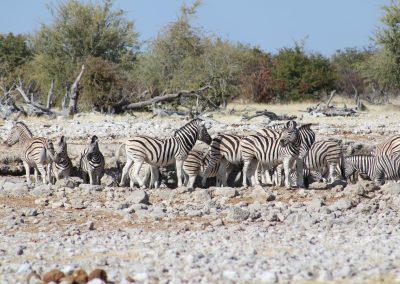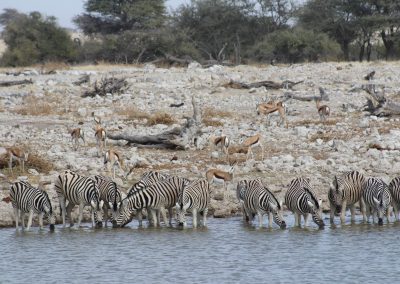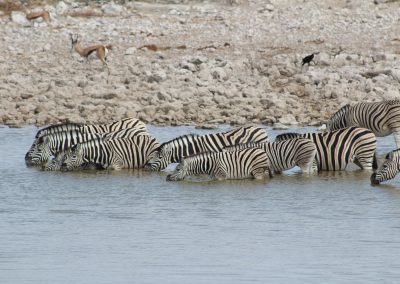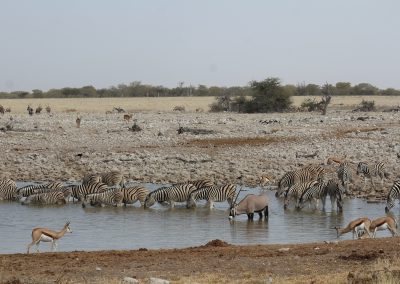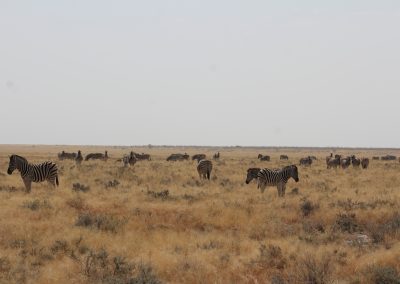By Craig Boddington
The zebra is Africa…but it’s not that simple!
The zebra is Africa’s most recognizable animal, requiring no description. Although related to both horses and asses and of the same Equus genera, the zebra is indigenous only on the African continent, and evidence that it existed elsewhere in prehistory is unclear. In Africa the zebra is not found continent-wide, but occupies an extremely broad range across East and Southern Africa. There are actually three species of zebra: Plains, mountain, and the Grevy’s zebra. There are, or were, seven races or subspecies of plains zebra and two of mountain zebra; the distinct Grevy’s zebra stands alone.
All zebras are primarily grazers, social animals that form into herds. Typically, these are harems with a dominant male and his mares. With both mountain and plains zebras these are permanent bonds, but Grevy’s zebra groups are temporary, with the males wandering off on their own after a few months. With all zebras, surplus males form bachelor groups. Size of the herds depends on population density and available grass and water; mountain zebras, usually in harsh habitat, are found in smaller groups—twenty is a lot—while plains zebras can form into large herds.
All visitors to Africa want to see this signature animal, and indeed they’re marvels to observe… it doesn’t take long before the seemingly nonsensical stripes make perfect sense: In shadows the zebra’s camouflage is amazing. Even in sunlight the stripes merge and blend…and imagine what a predator, sans color vision, is observing in black-and-white.
I am not a casual visitor to Africa. I love to observe her wildlife, but I make no secret that I am a hunter, always looking with a hunter’s eye. So, with zebras, I am studying the striped patterns and trying to locate the stallion in the group. This is fascinating…and often difficult! I must also make no secret that I enjoy hunting zebras! Sorting the correct animal from the herd is an interesting and sometimes frustrating puzzle. The fully utilized meat is unusually marbled, and a zebra rug seems almost an essential safari memento!
Because of their resemblance to the horses we love, anti-hunters, many non-hunters, and even many hunters are shocked at the thought of hunting a zebra. The best answer I have to the question, “How could you possibly kill a zebra?” comes easily: “Only with great difficulty!”
But, back to this matter of stripes.
BLACK AND WHITE?
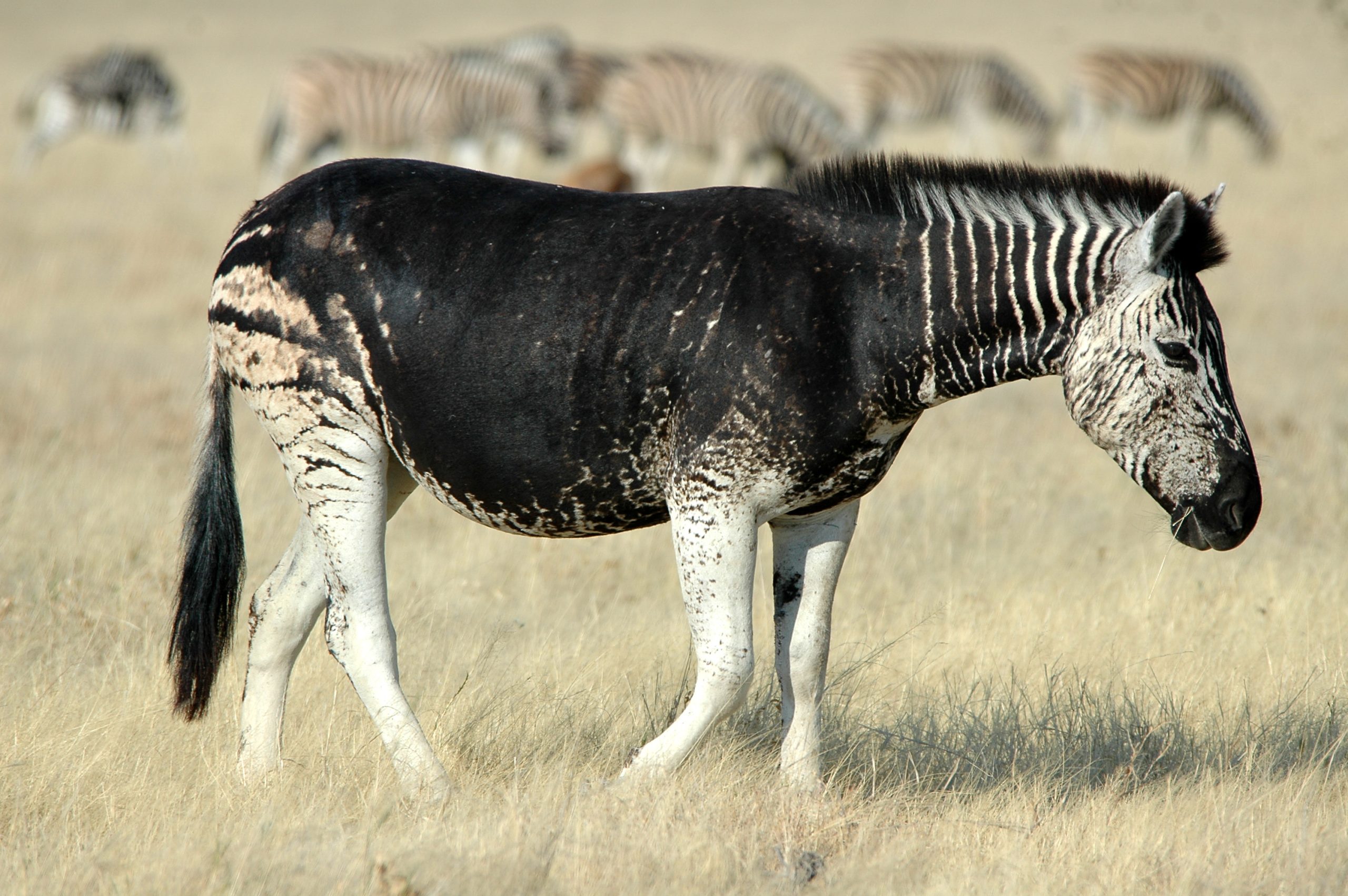
A rare melanistic zebra photographed in Etosha National Park. From few surviving photos, this animal is similar to what the extinct quagga looked like, although the quagga’s body color wasn’t so dark. (Photo by Dirk de Bod)
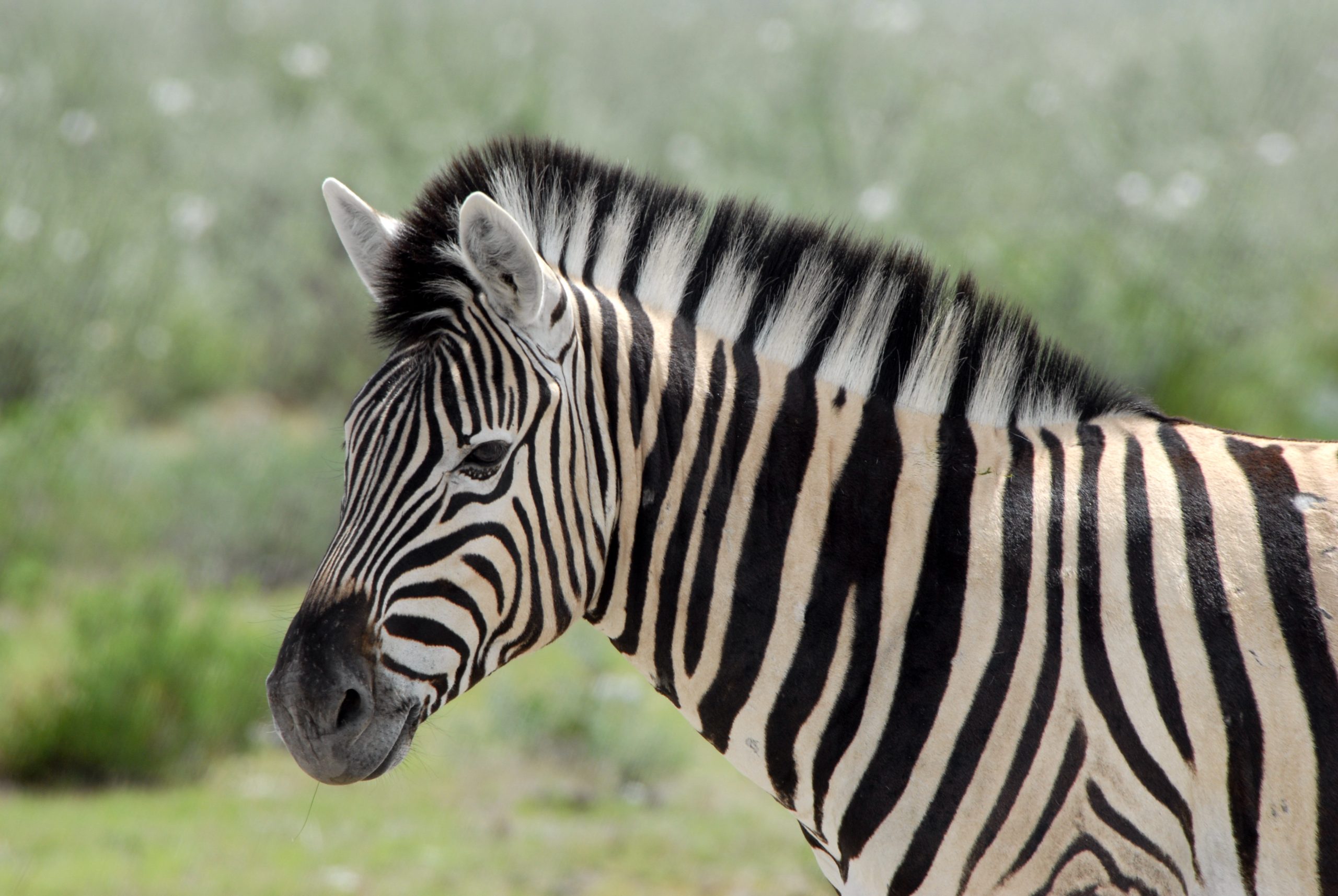
Portrait of a Burchell’s zebra, probably a mare because the neck seems a bit too thin to be a stallion. On the shoulder the upside-down “V” marking can be seen. With a broadside presentation, this chevron offers a perfect aiming point. (Photo by Dirk de Bod)
The three species and several races of zebras vary in striped patterns, but universally have vertical stripes on the body and horizontal stripes on rump and legs. The several plains zebras have stripes all the way to the belly, while the mountain and Grevy’s zebras have a white belly, their vertical stripes stopping short. It’s commonly believed the zebra is a white animal with black stripes, but recent research suggests the opposite: The zebra is a black animal, with white added during development. While some varieties have distinct striping, all are pretty much black and white, except – the young mountain zebras have undertones of brown that remain on the face in maturity. And several races of plains zebra have noticeable “shadow stripes” between the black and white bands that can be brown, gray, or muted.
So, which zebra are we looking at? There are hybrid zones, and today there are differences between historic native ranges and current distribution. The three species remain pure, at least in the wild – plains zebras, mountain zebras, and Grevy’s zebra do not interbreed! But some of the subspecies, and exactly where they range today, is a bit messy. Relatively little precise DNA work has been done because, after all, a plains zebra is not a mountain zebra, and the endangered Grevy’s zebra is very distinctive. Here’s a rough guide:
PLAINS ZEBRA: The plains zebra is Equus quagga. The type specimen, the quagga, E. q. quagga, became extinct in 1878. Once numerous, the quagga lay squarely in the path of South Africa’s settlement; the last wild quaggas were in Orange Free State. A few skins and photographs of one zoo specimen survive, so we know the quagga had vertical stripes on neck and shoulder and a dark body, perhaps with muted stripes. There are six extant plains zebra races, though not all authorities are in complete agreement.
Most widespread and numerous is the Burchell’s or “common zebra,” E. q. burchelli. This is the zebra most prevalent in South Africa, the southern three-quarters of Namibia, and most of Zimbabwe and Botswana. This zebra has the most prominent shadow striping, although zebra stripes are like fingerprints – no two are exactly alike!
Farther north is the Grant’s zebra, E. q. boehmi, found from Zambia’s Kafue (west of Luangwa) north through western Tanzania and on up into Kenya. This is the zebra I hunted in western Zambia, central Tanzania and Masailand, and southern Kenya. Grant’s zebra is slightly bigger than Burchell’s zebra, with mature stallions weighing up to 700 pounds. The big difference: This zebra lacks shadow stripes and has an extremely beautiful black-and-white skin.
The Selous zebra, E. q. selousi was once widespread in central Mozambique, but we almost lost this one. When hunting resumed after the long civil war there may have been as few as 20 Selous zebras in the Marromeu complex. Today there are more than 500, increasing nicely, with a small hunting quota. This is a smaller zebra, but pure black-and-white. Interestingly, the Selous zebra always has a white spot near the backbone, which is said to be where the striping pattern starts!
The Sudan maneless zebra, E. q. borensis. is the northernmost race of plains zebra. Described as late as 1954 by Tony Henley, then a game ranger and later a famous professional hunter, the maneless zebra does, in fact, have a very short mane! This zebra occupies a limited range in northwestern Kenya, Uganda’s Karamoja District, and southeastern Sudan. The few photos I have seen suggest a thin, muted shadow stripe, but the maneless zebras I saw in Uganda were in too bright light to confirm or deny this!
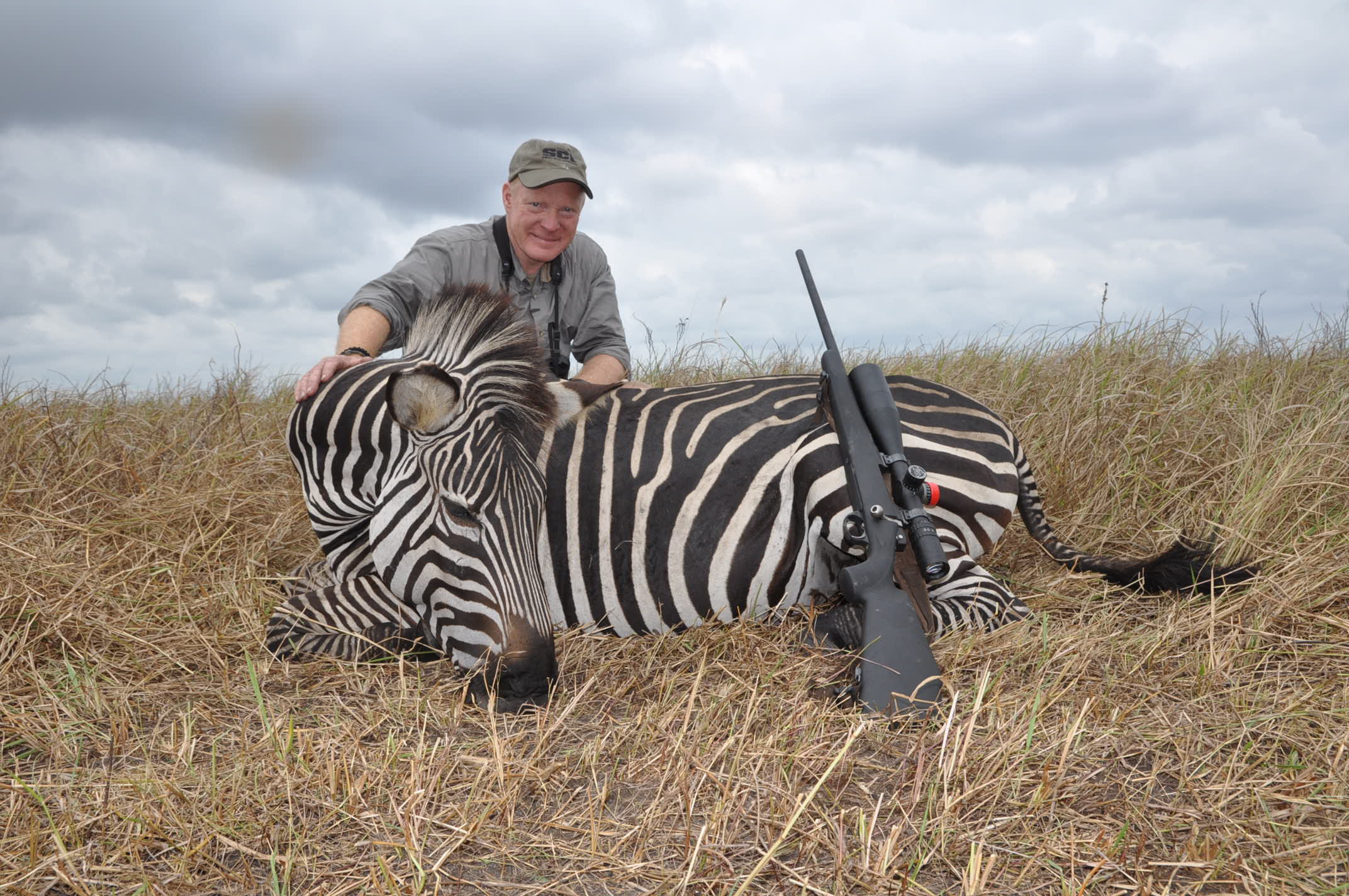
This is a Selous zebra taken in coastal Mozambique. The Selous is a smaller zebra with beautiful black-and-white skin. Once seriously threatened, good management has brought this zebra back to huntable numbers.
Chapman’s zebra, E. q. chapmani, is the zebra of Caprivi, adjacent Botswana and Zimbabwe, and southern Angola. Chapman’s zebra is a large zebra, up to 800 pounds, with shadow stripes much like the Burchell’s zebra. A major difference is that younger animals are more brownish than black, and some Chapman’s zebras maintain the brownish tint into maturity.
In northeastern Zambia and on up through Malawi and into southeastern Tanzania the zebras are Crawshay’s zebra, E. q. crawshayi. This is the zebra of the Selous Reserve and adjacent areas. I have found that this is a big zebra, generally with narrower stripes than other plains zebras, but with slight shadow stripes on some individuals
MOUNTAIN ZEBRA: There are two, the Cape mountain zebra, E. zebra zebra; and Hartmann’s mountain zebra, E. z. hartmannae. The two are geographically separated, with the Cape mountain zebra occupying the smallest range of any zebra, in isolated mountain habitats in the Eastern and Western Cape. They are visually indistinguishable, except the Cape mountain zebra is the smallest of all zebras, with big stallions weighing less than 600 pounds. Both varieties have white bellies and vertical body stripes, with brownish tints that usually darken with maturity, except on the face. Mature males of both races have a prominent dewlap, which can be a valuable hint when trying to determine sex. Perhaps the most defining visual characteristic of the mountain zebra is a triangular “Christmas tree” marking above the tail, where short vertical stripes meet horizontal stripes on the rump.
The Cape mountain zebra is considered endangered, but thanks to game ranching has been brought back from the brink and numbers are increasing. It may not be imported into the United States. Hartmann’s mountain zebra is naturally found in isolated mountain ranges from central Namibia north to southwestern Angola. Again, thanks to the game ranching industry, Hartmann’s zebra is now widespread throughout much of Namibia, and has been introduced into some properties in South Africa. This could prove a problem: Hartmann’s zebra is much larger than the Cape mountain zebra, and the two subspecies will interbreed.
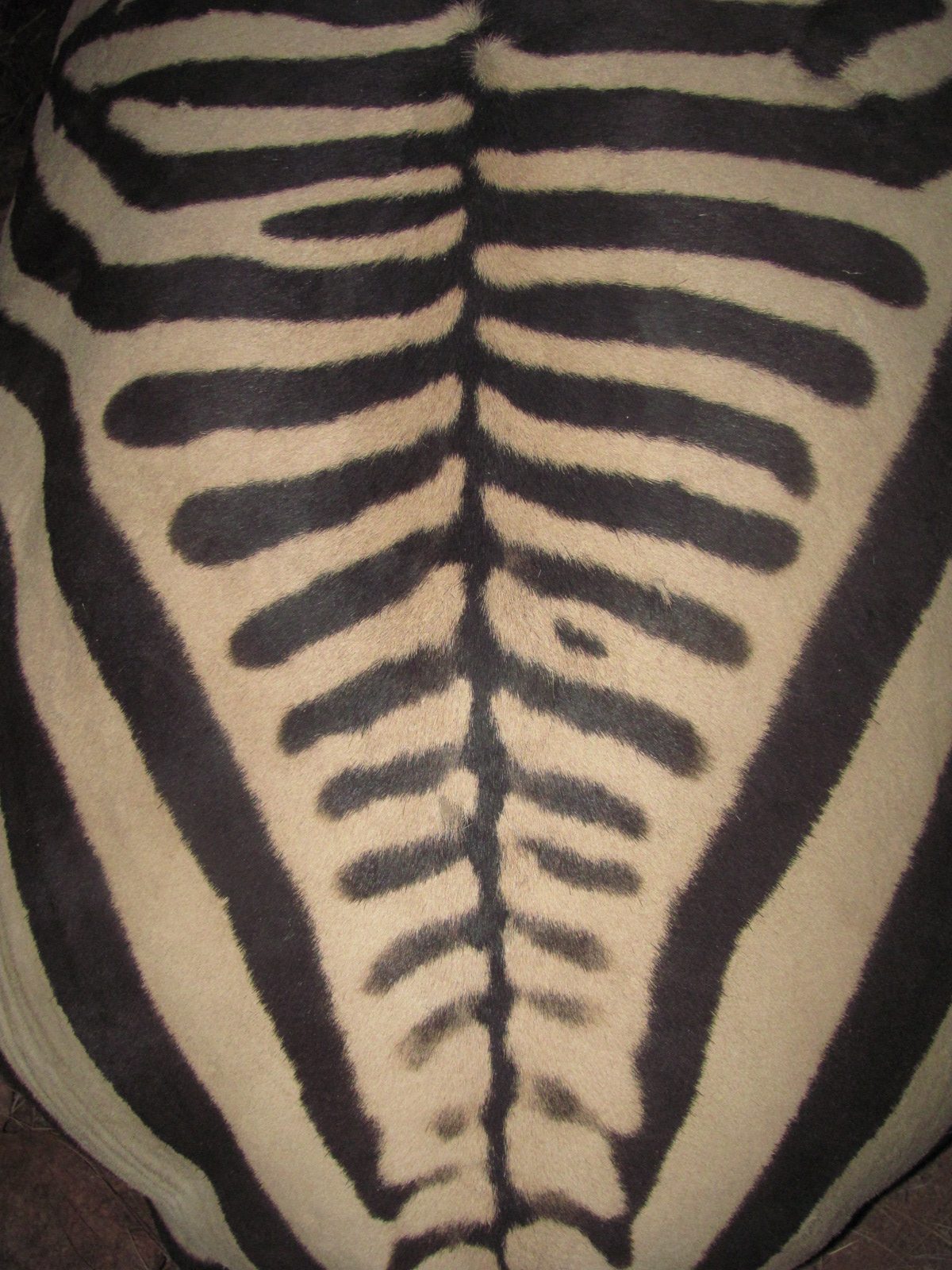
The signature “Christmas tree” marking above the tail of a mountain zebra, where vertical stripes meet horizontal stripes on the hips. Both Cape and Hartmann’s mountain zebras have this characteristic.
GREVY’S ZEBRA: To my thinking Grevy’s zebra, E. grevyi (a unique species with no subspecies) is the most beautiful of all zebras, sort of a pin-striped zebra, found in northern Kenya, Somalia, and up through Ethiopia to the Danakil Depression. Grevy’s zebra is the largest of all zebras, weighing up to 900 pounds, with big ears, more like a wild ass, while other zebras are more horse-like in appearance. Regrettably, the gorgeous Grevy’s zebra lives in bad neighborhoods and is seriously threatened, and as few as 3000 remain in the wild.
CURRENT OPPORTUNITIES
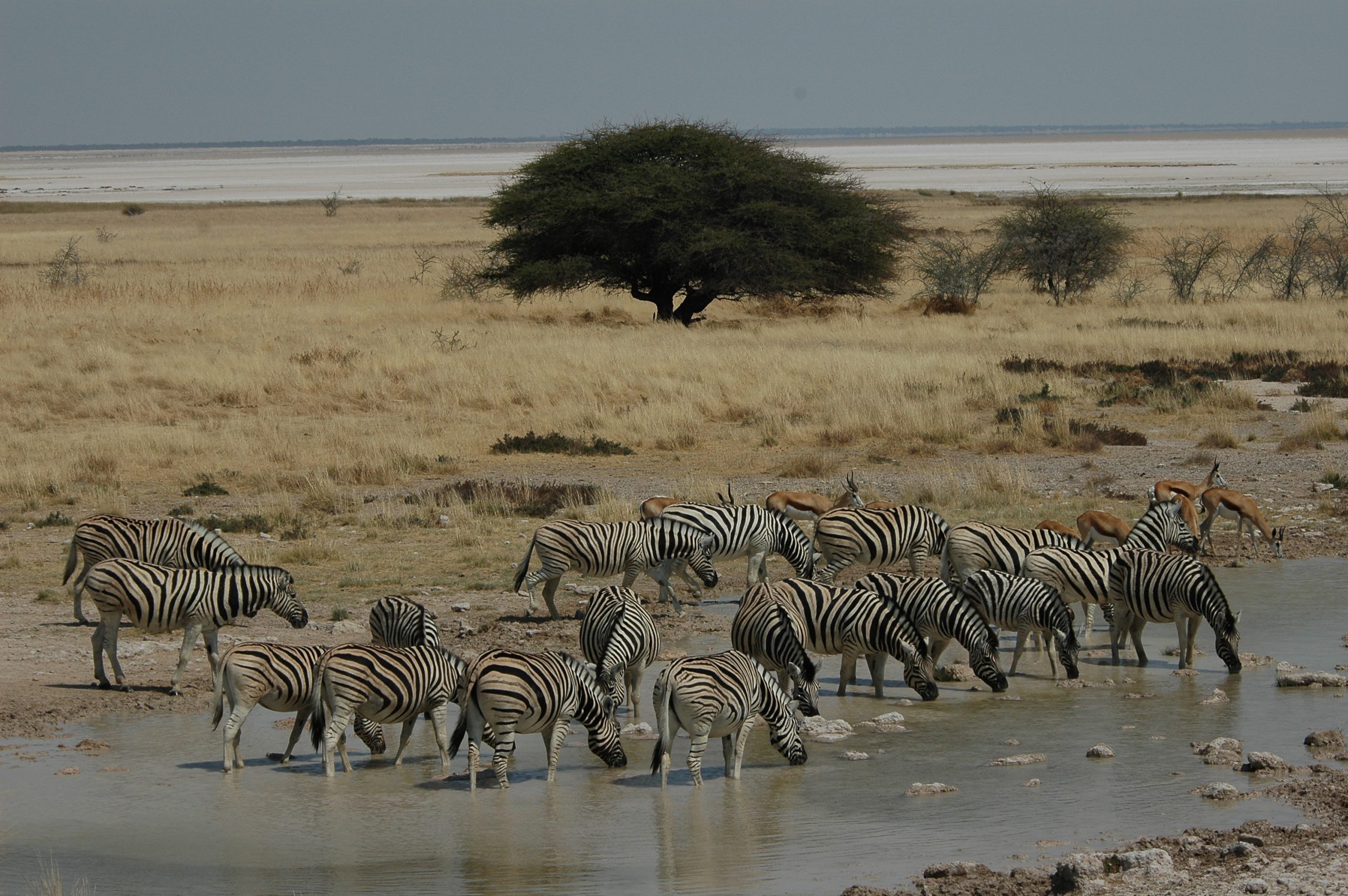
A common waterhole scene at Namibia’s Etosha National Park, where Burchell’s zebras roam in the many thousands.
(Photo by Dirk de Bod)
Well, it took me 40 years, but, except for the long-gone quagga, I’ve actually seen all the races of zebra! The only time I’ve seen Grevy’s zebra in the wild was in Ethiopia’s Danakil in 1993; even then they were completely protected. The tide seems to be turning, with the remnant population stable, but it is highly unlikely Grevy’s zebra will ever return to huntable numbers. In March 2017, in Uganda’s Karamoja District, hunting along the boundary of Kidepo National Park, we saw a couple of herds of Sudan maneless zebras. The manes are not quite absent, but clearly not the long, stiff manes of other zebras. This zebra, too, is protected and has not been hunted since 1983, when hunting in Sudan ground to a halt. The population is stable and probably not endangered, but this zebra’s range is limited, so it is definitely vulnerable.
All the other zebras are huntable today, depending primarily on where you are. Burchell’s zebra is, of course, widespread and numerous. Grant’s zebra is the zebra you will hunt in western Zambia, and central and northern Tanzania. You’ll love the black-and-white skin without shadow stripes! In Mozambique’s Marromeu complex the Selous zebra has been brought back from the brink and is hunted. The annual quota is just a handful; you need to speak up well in advance if you want this set of stripes.
Among the zebras, it is probably least clear exactly where Burchell’s zebra stops and Chapman’s zebra takes over. Without question Namibia’s Caprivi (now Zambezi Region) is the best place, and these are pure Chapman’s zebra, but, as with the Selous zebra, the quota is small, so you have to speak up.
In Zambia the Luangwa River is said to be the boundary between Grant’s and Crawshay’s zebra, so this one is fairly simple: You will be hunting Crawshay’s zebra in the Luangwa Valley, and in the Selous and adjacent areas, but Grant’s zebra lies to the west and north.
Thanks to game ranching, permits are available for the small and utterly gorgeous Cape mountain zebra, but they cannot be imported into the U.S. The larger Hartmann’s mountain zebra is readily available throughout much of Namibia, also thanks to game ranching. A huge boon to ranchers, mountain zebra and plains zebra don’t interbreed, so today many areas offer both Hartmann’s and plains zebra. I’ve never known anyone who wanted to make a collection of all the zebras. It would be impossible, and also silly: Several are visually indistinguishable. But wherever you are, the “local zebra” offers a good hunt… and a lovely set of stripes!
IT AIN’T THAT EASY
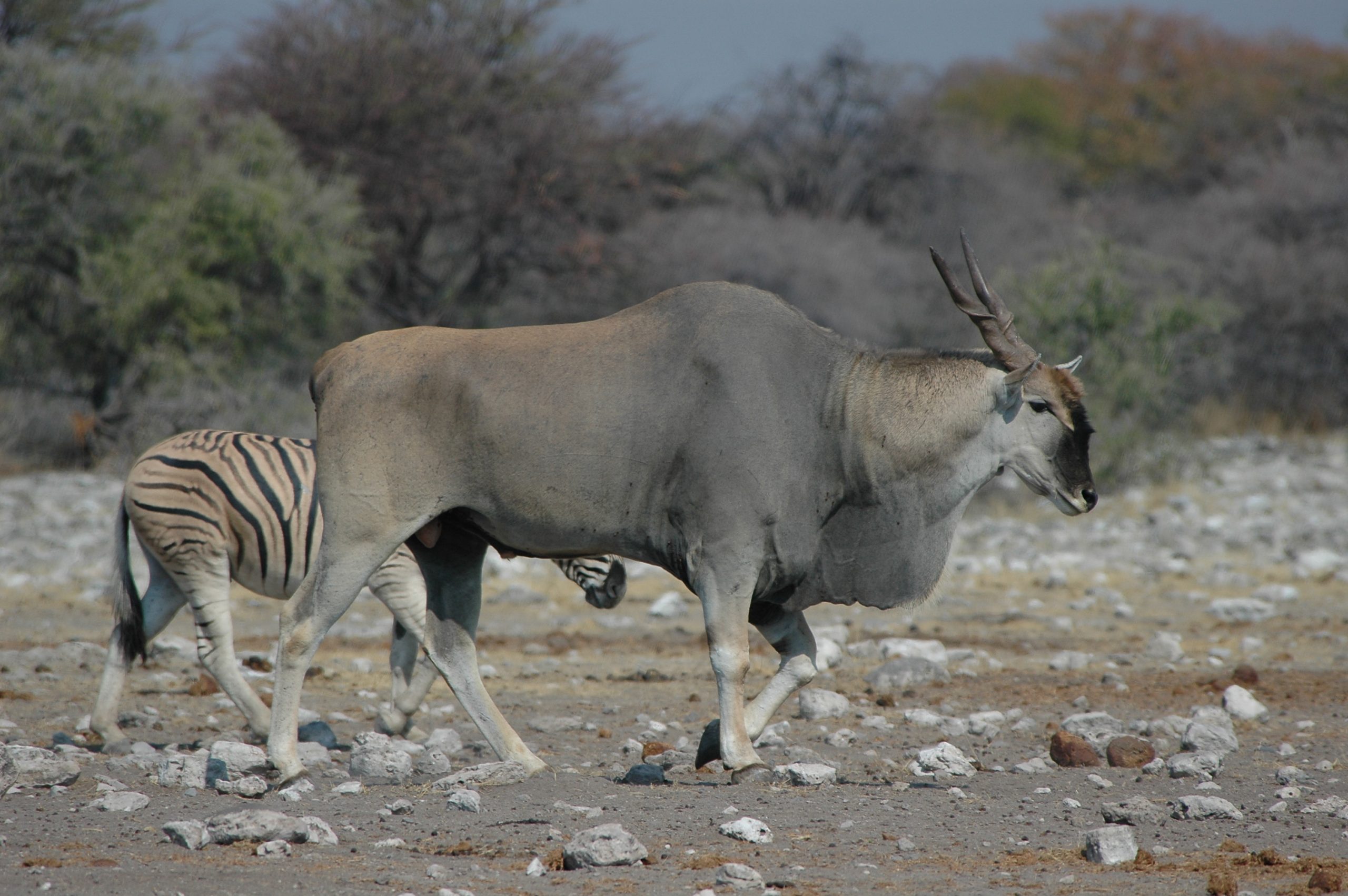
Putting things in perspective! The zebra is a large animal, weighing up to 800 pounds…but dwarfed by this eland bull, easily in excess of a ton! (Photo by Dirk de Bod)
As I said, you will often obtain that zebra rug only with great difficulty! If you’re a “horse person” or you’ve ever done any horseback hunting, you know that equines have all senses tuned and are amazingly aware of their surroundings (if only we could instantly understand what they’re telling us!). Zebras have all this, and more… they are among the wariest of animals in the African bush or, as our PHs say, “the most switched on.”
Zebras are extremely difficult to approach and difficult to fool. Unlike some animals, their eyesight is sharp, and their ears and noses are keen. All of this is compounded and conflicted by a simple physiological fact: Zebras are uniquely difficult to sex! It isn’t just that they are without characteristics like horns or antlers! The stallion’s junk is very tight between the hind legs. In open ground you might get a glimpse, but in long grass or thornbush habitat, never.
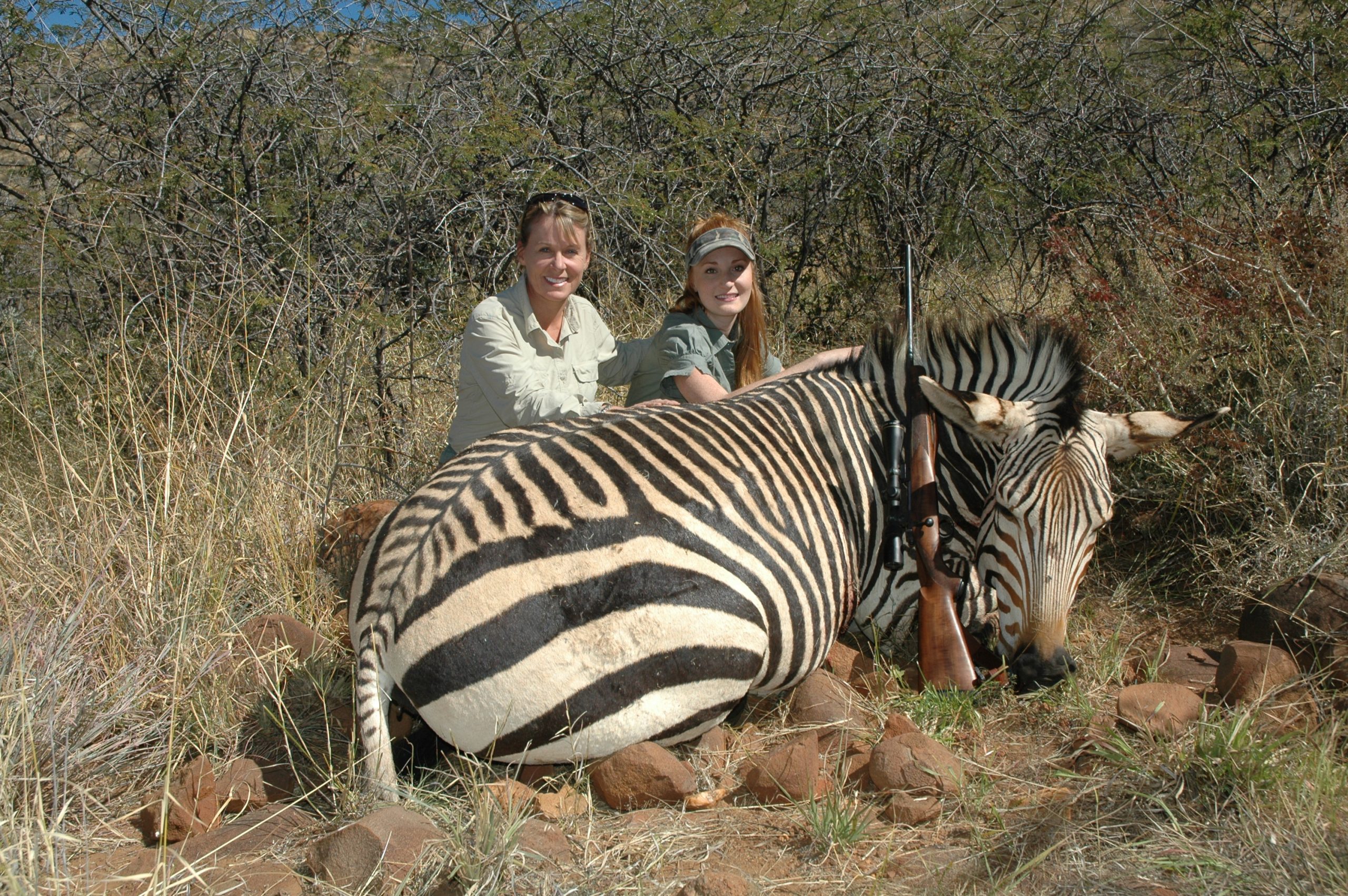
Donna and Brittany Boddington with a big Hartmann’s zebra stallion, taken on the spine of Namibia’s Erongo Mountains. This zebra shows the classic “Christmas tree” rump marking, plus the brownish facial stripes, both hallmarks of Hartmann’s zebra.
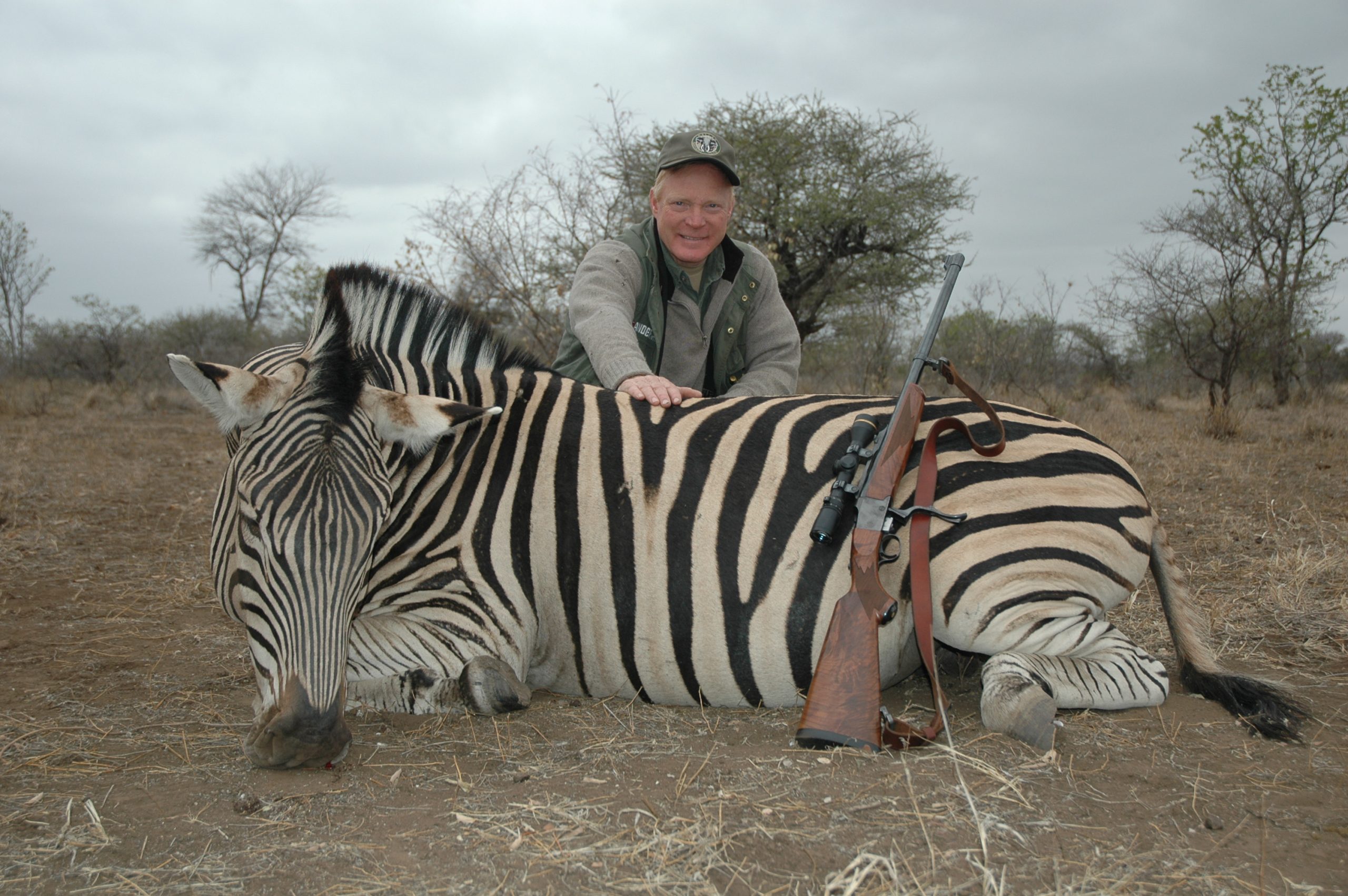
A typical Burchell’s zebra, taken in southern Zimbabwe with a Ruger No. One single-shot in .405 Winchester.
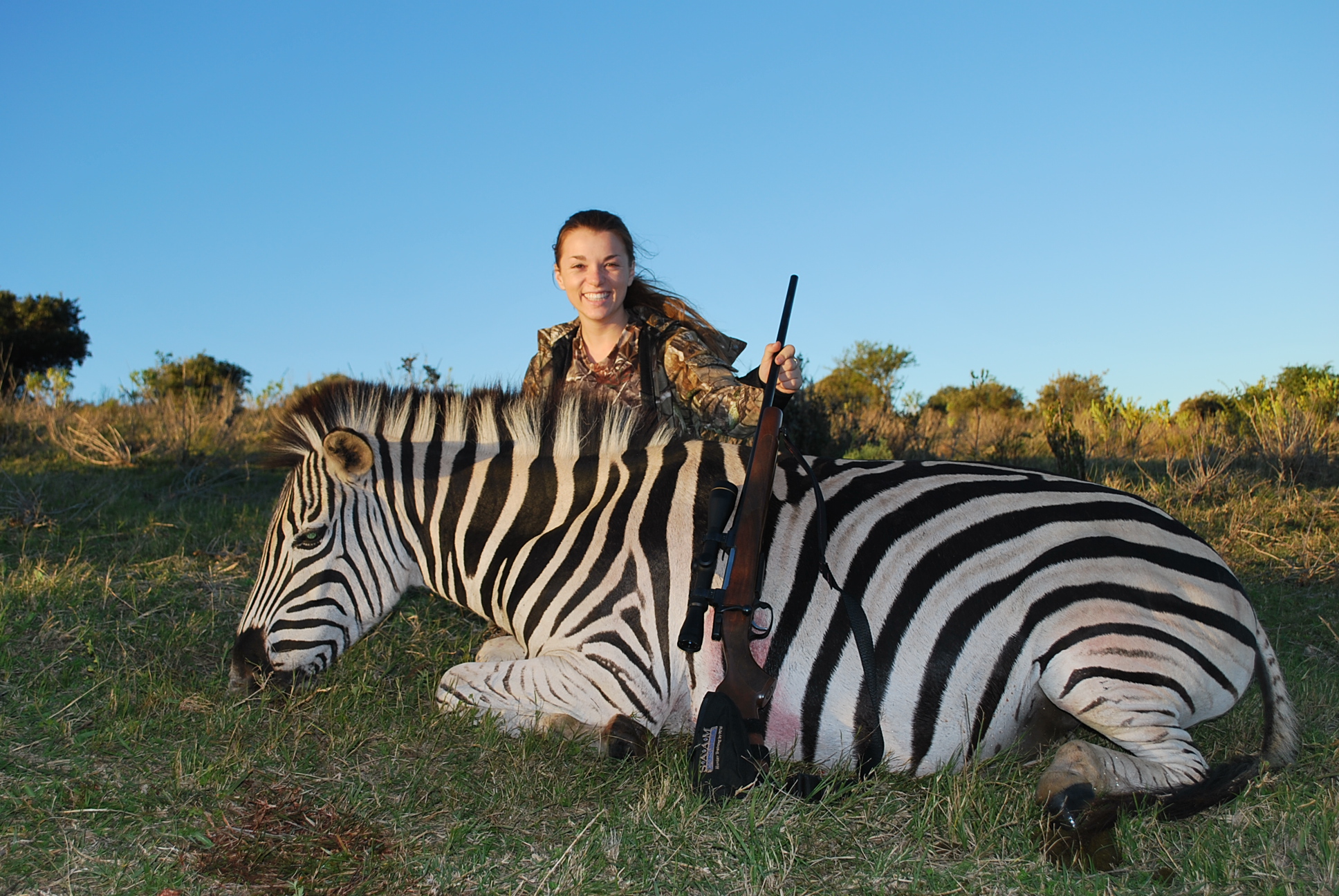
A zebra was at the top of Caroline Boddington’s wish list on her first safari. She took this big Burchell’s zebra with Carl Van Zyl. A single shot to the shoulder chevron with her 7mm-08 worked perfectly.
The absolute mandate to shoot only males depends largely on the local population and herd dynamics. There is no shame in taking an older female. Stallions fight viciously, and mares usually have skins that are much less scarred. However, all things equal, in most areas we try to take only stallions. But not always. There is evidence, especially with mountain zebras, that, depending on local population, it can take a long time for a stallion to come into the herd. So, it’s not cut-and-dried, but typically a major hurdle in any zebra hunt is to identify the stallion.
There are many clues. The zebra stallion is generally larger and has a thicker neck; mountain zebra stallions have defined dewlaps. More important is behavior: The stallion can be the leader and will frequently bring up the rear, tending his mares, but he is rarely in the middle.
You have to keep looking, waiting for that glimpse, and take in all the clues. My first Hartmann’s zebra, in then-South West Africa 40 years ago, was in a little valley straight below us – no way to see anything from that angle. We watched for three eternities, and finally took the shot based entirely on behavior. Correctly, we took the stallion. Last year, in the Eastern Cape, we had a small herd of Burchell’s zebra feeding and milling below us, it wasn’t straight down, but the brush was up to their bellies, nothing to be seen. We watched and waited; there had to be a stallion, and we thought we knew which one. After a tense hour the most likely candidate turned away, and for just an instant I saw testicles under the tail.
TOUGH STUFF
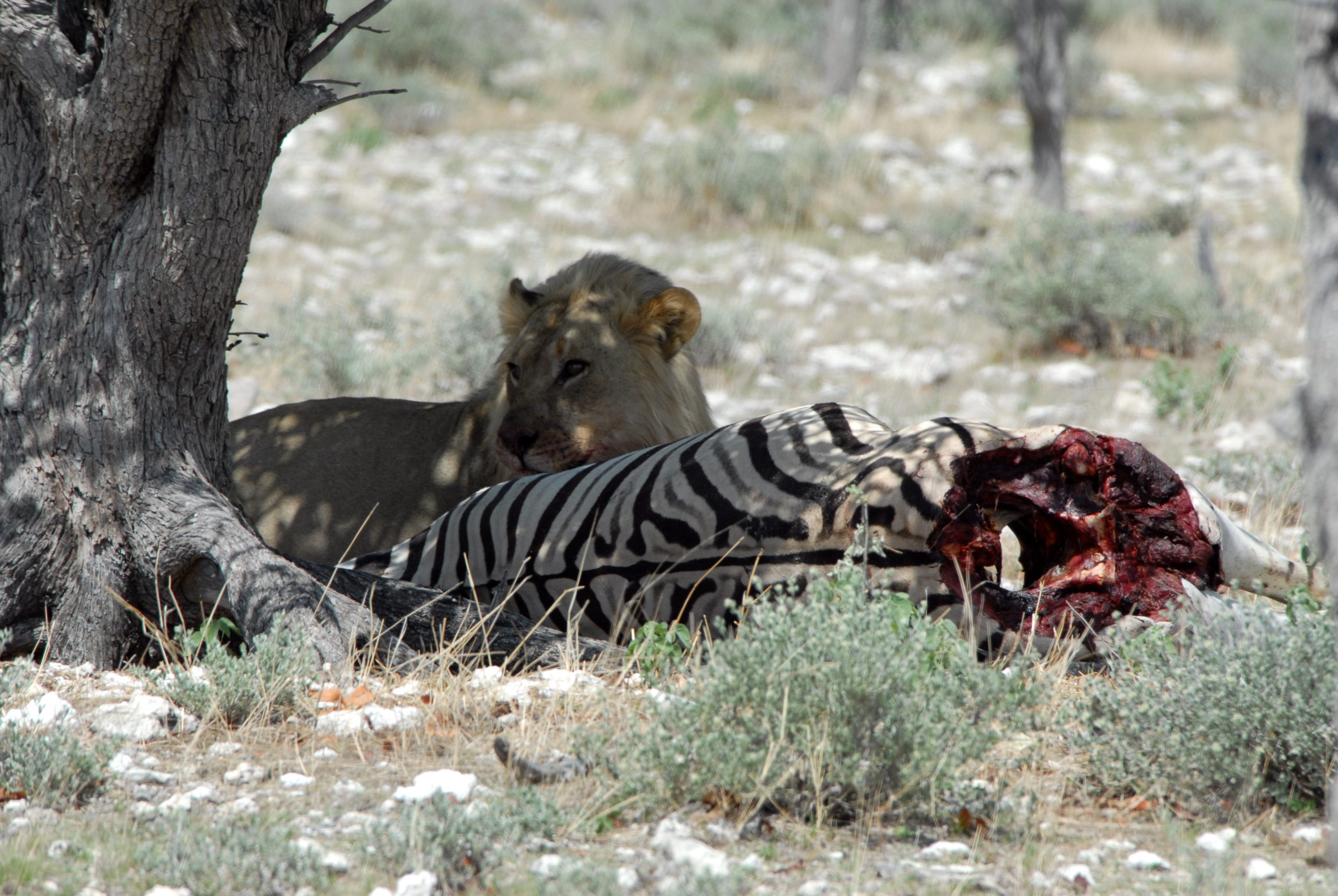
Zebras are a favorite prey of lions. A leopard is probably unable to pull down a mature zebra, but they love the fatty meat, so zebra is preferred bait for many leopard hunters. (Photo by Dirk de Bod)
Legend has it that “all” African game is extremely tough. This is not true, but zebras are very tough! Hit a zebra poorly and you will be in for a long day with unknown chances for recovery! The books say, depending on the subspecies, mature zebra stallions range from 550 to 900 pounds. Having shot quite a few but properly weighed none, I have no idea, but I figure 700 to 800 pounds is about right. Whatever, it’s a big animal and very strong!
The target area is large, and there is often an upside-down “V” of stripes on the shoulder, offering an inviting aiming point. With or without that guide, the middle of the shoulder is the right place, one-third up from the brisket. Center the shoulder with a good bullet that gets in and does its work, and there will be no problems. Flub the shot, and chances for recovery depend only upon the exact location of the hit and good tracking. Over 40-odd years I’ve only seen a couple of zebras lost, but I’ve been on some very long tracking jobs!
Zebras are often taken for lion or leopard bait, which means you need a zebra down now. The best-case scenario is to whack a zebra on the shoulder with a .375 – game over. However, I have seen zebras taken very cleanly with mild 6.5mms, 7mms, and .270s, and the great old .30-06 is awesome. But what really matters on zebra is shot placement. You gotta do it right. If you don’t, a lot of extra foot-pounds may not matter. These animals are tough.
Both of my daughters, despite teenage girls’ affinity for horses, put a zebra at the top of their wish lists on their first safaris. (Knock me over with a feather!) When questioned, one said, “Well, my Mom tells me zebras are really tough and hard to hunt, so it sounds interesting.” Unsolicited, both copped to the real reason: “Well, I’d really like a zebra rug for my room.” Fair enough, who doesn’t?
Only partly joking, wife Donna has often said, “No girl has too many zebras.” This has created a monster. She has nine nieces… and each one now wants a zebra skin, whether as a wedding or graduation present. We’ve covered some of them, but not all. At least I have an excuse to keep hunting!
THE BEST HUNT
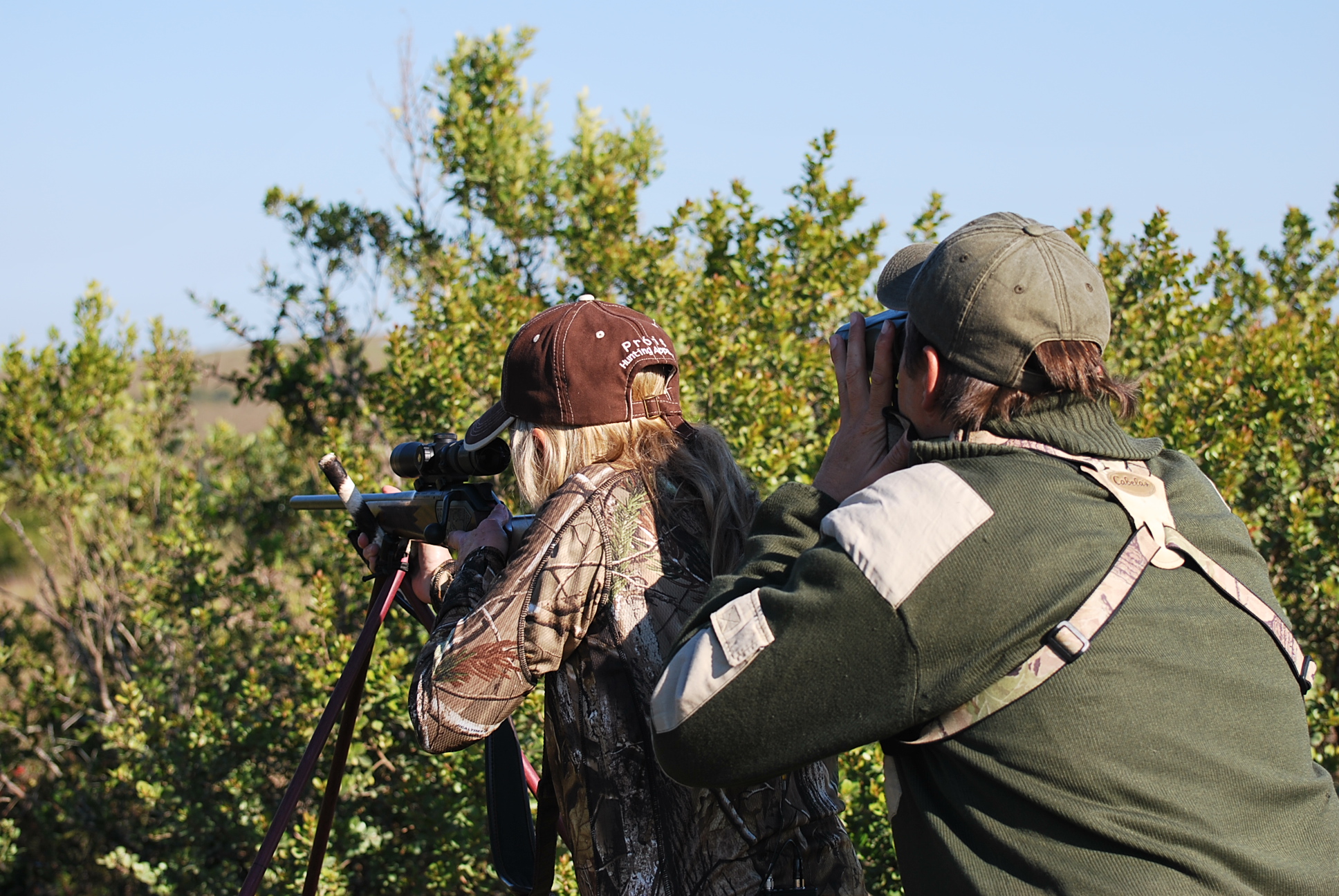
Hunting with PH Carl Van Zyl, Donna Boddington prepares to take a shot at a Burchell’s zebra.
Difficulty always depends on terrain, vegetation, numbers of animals, the wind… and blind luck! Once in a while a zebra rug comes easy with a quick shot, but not very often. Usually a few blown stalks and serious scrambling are needed. Honest, it’s all good, but the most enjoyable zebra hunting I’ve done has been Hartmann’s zebra in native habitat in Namibia’s rocky ridges, truly a magical hunt.
As I said, the first time was 40 years ago, in a time when game ranching was in its infancy and mountain zebras at their zenith. Ben Nolte and I climbed to the top of the Erongo Mountains, following intermittent tracks and hearing whistles. We got right on top of them among knife-edge ridges, a magic experience.
Since then I’ve done it many more times, certainly not all with me as shooter (after all, how many rugs do I need?). The mountain zebra in native terrain offers a real hunt, and a real mountain hunt! I may never fire another shot, but I’m sure I’ll make the climb a few more times!

